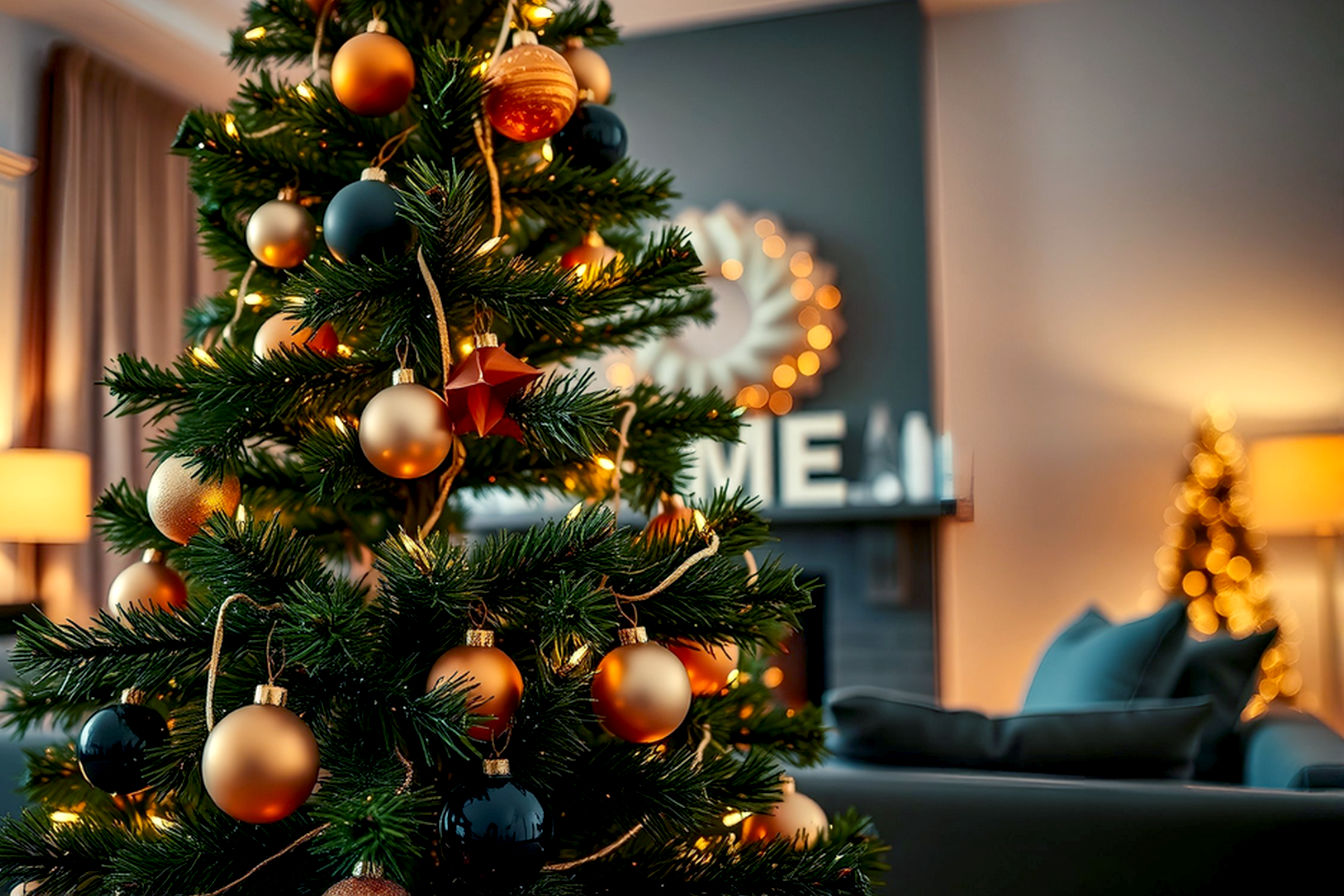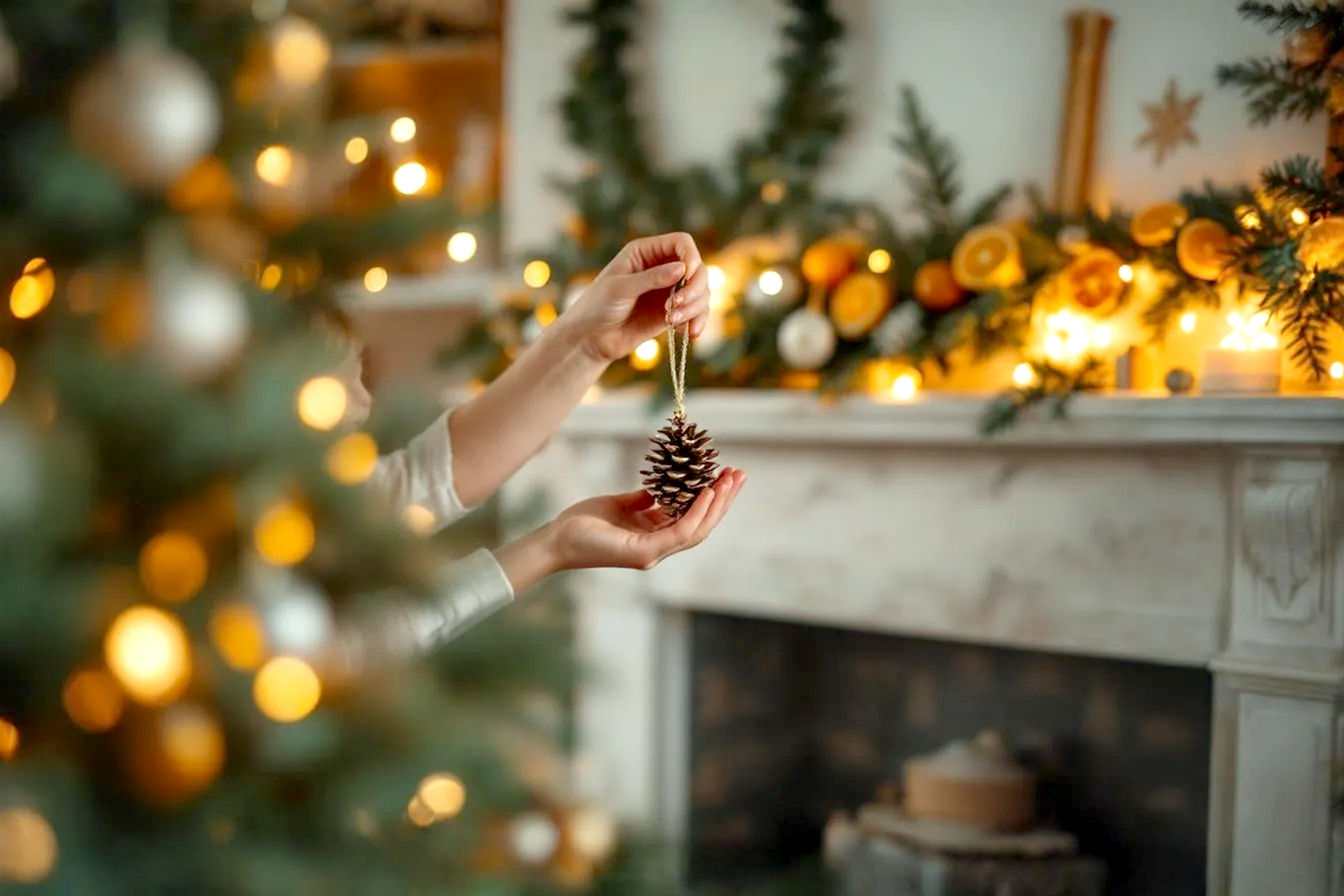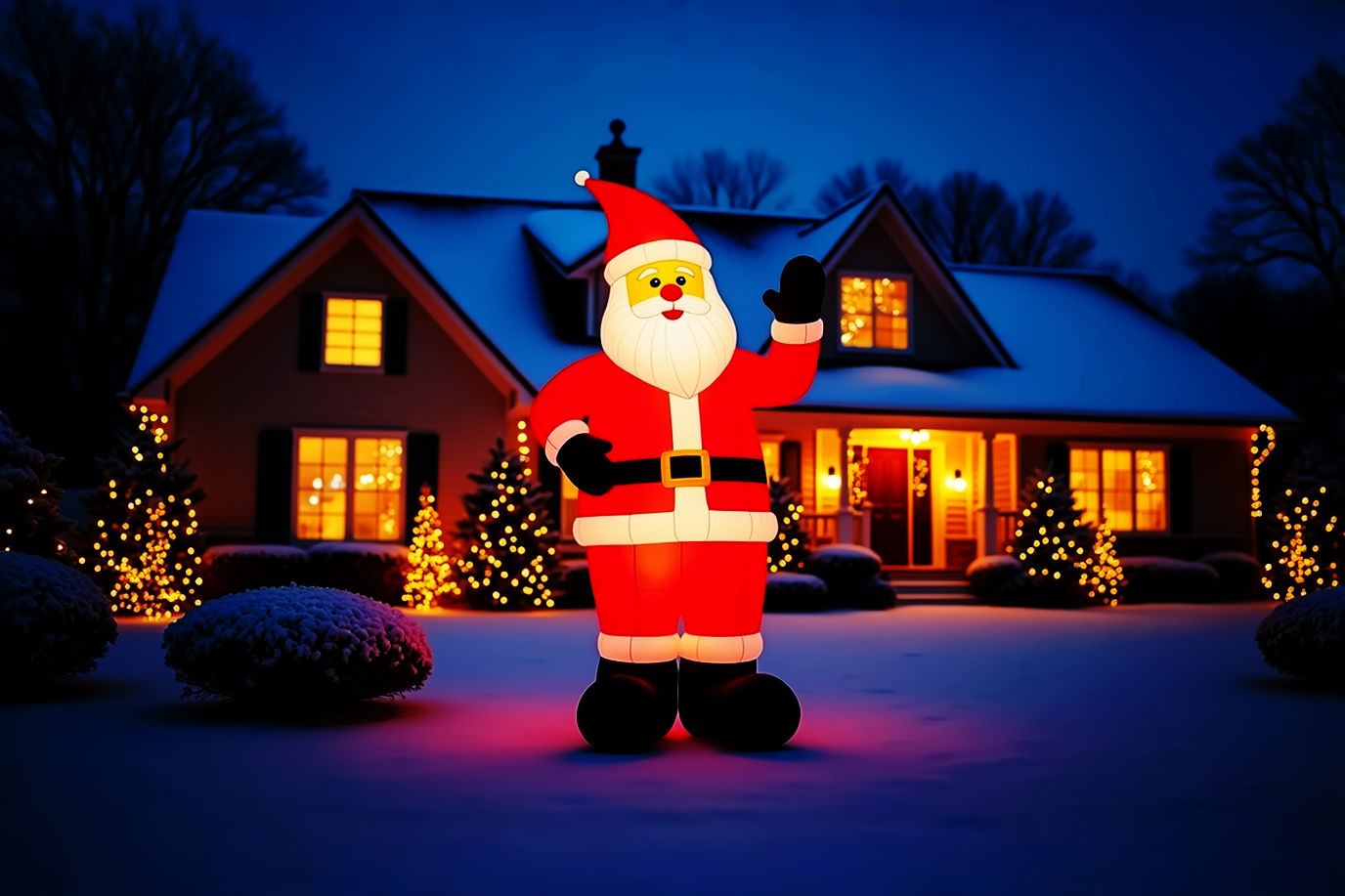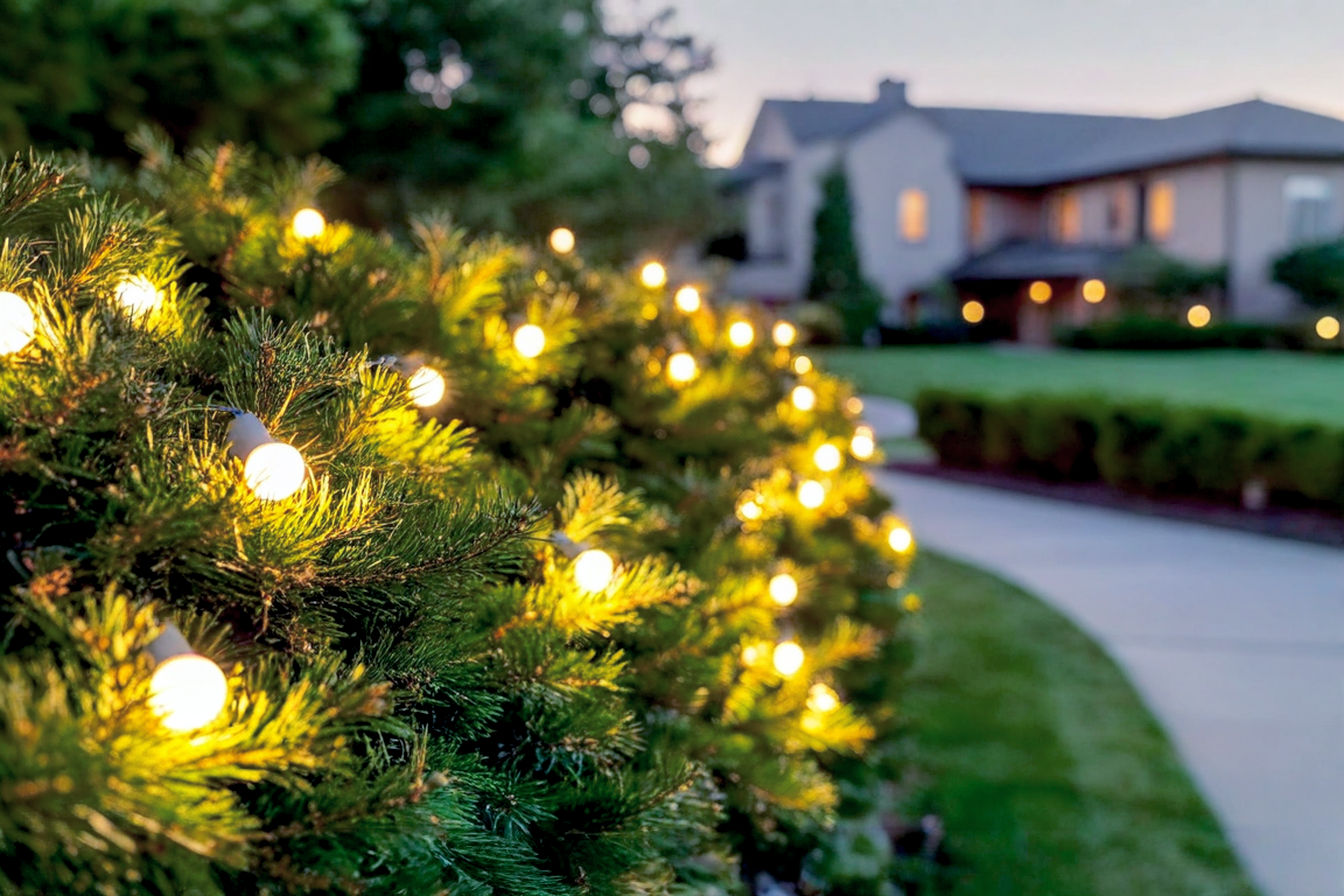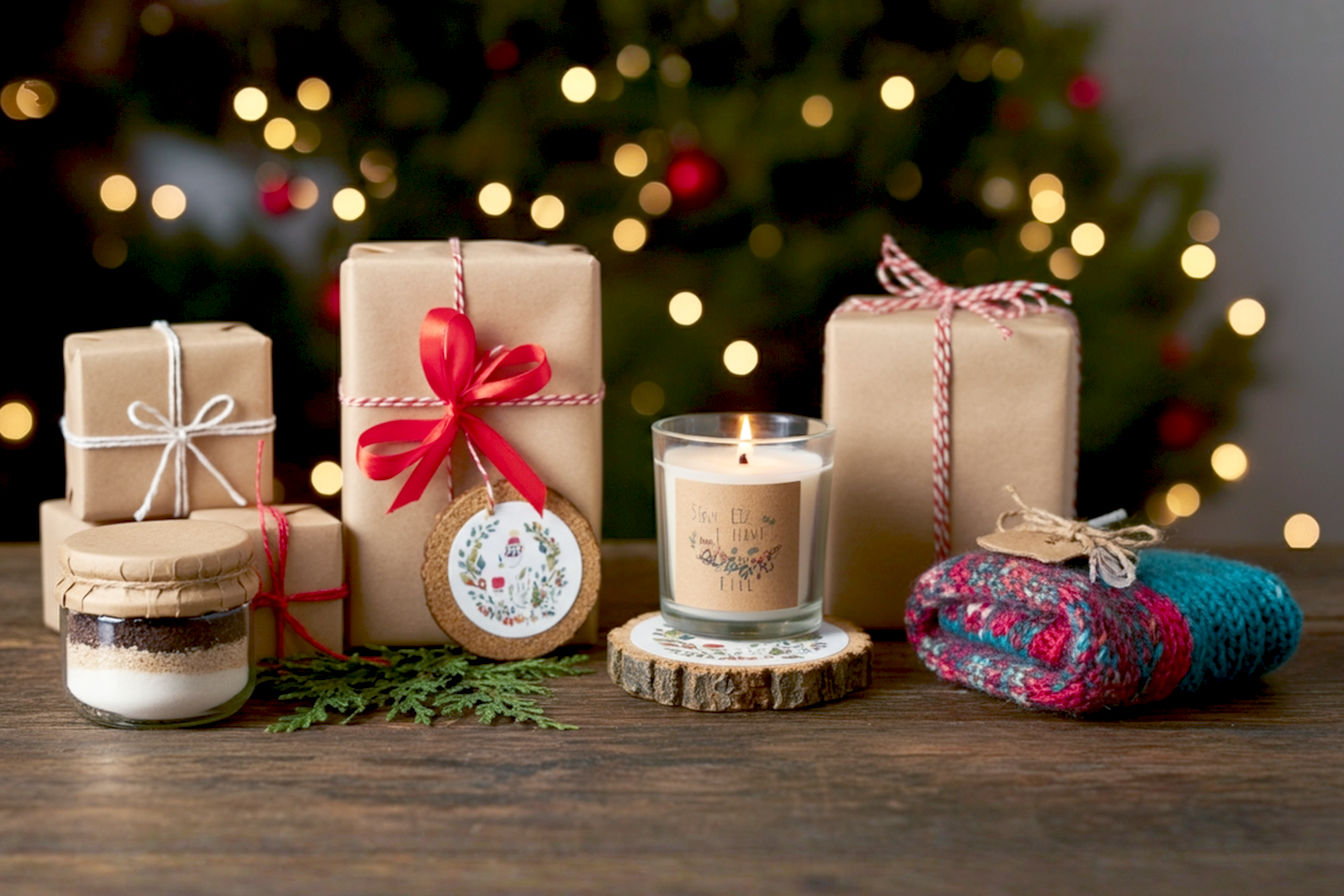This post may contain affiliate links. If you make a purchase through these links, we may earn a commission at no additional cost to you.
The holiday season brings a special kind of magic, and for many, that magic truly begins with the twinkling lights of a Christmas tree. While traditional string lights have long been a staple, a newer, more modern option has been gaining popularity: the fiber optic tree. These unique trees offer a dazzling display that’s quite different from what you might be used to. They promise a hassle-free setup and a captivating light show, but are they the perfect fit for your home?
This comprehensive guide will dive deep into the world of fiber optic trees. We’ll explore the fascinating technology that makes them glow, weigh their many benefits against their potential drawbacks, and compare them to other popular pre-lit options. By the end, you’ll have all the information you need to decide if a fiber optic tree is the ideal choice to illuminate your festive season.
Understanding the Brilliance: What Exactly is a Fiber Optic Tree?
When you hear “pre-lit Christmas tree,” you might picture branches wrapped with strings of tiny bulbs. While that’s common, a fiber optic tree is a distinct and often more sophisticated type of pre-lit artificial tree. It doesn’t just have lights on its branches; it has light within them.
Defining Fiber Optic Trees: More Than Just Pre-Lit
What truly sets a fiber optic tree apart is how it gets its glow. Instead of external light strands, miniature fiber optic strands are woven directly into the tree’s branches. These incredibly thin, flexible strands are designed to transmit light from a central source, causing the very tips of the branches to shimmer and change color. The effect is often described as a soft, ethereal glow, quite unlike the distinct points of light you see on a tree with traditional string lights. It’s a built-in light show that requires no extra effort once the tree is assembled.
The Science Behind the Sparkle: How Fiber Optics Work in Trees
The captivating display of a fiber optic tree isn’t magic; it’s the result of some clever physics. The core principle at play is called Total Internal Reflection (TIR).
Basic Principle of Fiber Optics: Total Internal Reflection
Imagine a long, clear hose. If you shine a flashlight into one end, the light travels down the hose and comes out the other end. Fiber optics work in a similar, but much more efficient, way.
- Simplified Explanation: Think of fiber optic strands as tiny, flexible light pipes. When light enters one end of these special strands, it bounces repeatedly off the inner walls. It keeps bouncing until it reaches the other end, where it then exits and creates the glow you see. This bouncing keeps the light trapped inside the fiber, allowing it to travel long distances without losing much intensity.
- Technical Explanation: Each fiber optic strand is made up of two main parts: a core and a cladding. The core is the inner, light-carrying part, usually made of high-purity glass or plastic. Surrounding the core is the cladding, which is made of a material with a slightly lower refractive index. The refractive index is a measure of how much light bends when it passes through a material. Because the cladding has a lower refractive index than the core, any light rays that hit the boundary between the core and cladding at a shallow angle are reflected back into the core, rather than escaping. This continuous reflection, known as Total Internal Reflection, is what guides the light along the entire length of the fiber.
The Light Source: The Engine of the Glow
At the base of most fiber optic Christmas trees, usually hidden within the stand or trunk, is the central light projector. This is the heart of the tree’s illumination.
- Older Models: Many traditional fiber optic trees use a halogen bulb as the primary light source. In front of this bulb, a rotating color wheel spins. As the wheel turns, different colored filters pass in front of the light, causing the light entering the fiber optic strands to change color. This creates the classic, mesmerizing color-changing effect seen on many fiber optic trees.
- Modern Models: Newer fiber optic trees often use Light Emitting Diodes (LEDs) as their light source. LEDs are more energy-efficient and can produce a wider range of colors directly, often without the need for a mechanical color wheel. Some trees even combine fiber optics with additional integrated LED lights on the branches for enhanced brightness and varied effects.
- How Light Travels: Regardless of the light source, the light is channeled into a bundle of fiber optic strands at the base of the tree. These bundles then split off, with individual strands extending into each branch. The light travels through these strands, and because of Total Internal Reflection, it emerges only at the very tips of the fibers, creating the signature glowing effect.
Materials Used: Plastic vs. Glass Fibers
While the principle is the same, fiber optic strands can be made from different materials. Plastic optical fibers (POF) are more common in decorative applications like Christmas trees due to their lower cost, greater flexibility, and easier handling. They are also less fragile than glass fibers. Glass optical fibers are typically used in high-speed data transmission, where minimal signal loss over long distances is critical. For a Christmas tree, plastic fibers are perfectly sufficient and contribute to the tree’s overall safety and ease of use.
The Luminous Advantages: Why Choose a Fiber Optic Tree?
Fiber optic trees offer a compelling list of benefits that make them an attractive option for many homeowners. They solve common holiday decorating headaches and bring a unique aesthetic to your festive display.
Effortless Setup and Instant Glow
One of the biggest selling points of a fiber optic tree is its unparalleled ease of setup.
- Pre-lit Convenience: Forget the frustrating tangle of string lights. With a fiber optic tree, the lights are already integrated into the branches. This means no more untangling knots, no more searching for burnt-out bulbs on a string, and no more unevenly lit sections.
- Quick Assembly and Disassembly: Most fiber optic trees come in a few sections that simply connect together. Once assembled, you just plug it in, and the tree instantly comes to life with its glowing display. Taking it down is just as simple, saving you valuable time and effort during the busy holiday season. This “plug-and-play” nature is a significant advantage for those who dread the annual light-stringing ritual.
Energy Efficiency: Lighting Up Responsibly
In an era where energy consumption is a growing concern, fiber optic trees shine brightly in terms of efficiency.
- Low Power Consumption: Because fiber optic trees primarily use a single, central light source (often an LED bulb in modern designs) to illuminate many strands, their overall power draw is remarkably low. Compared to multiple strings of traditional incandescent Christmas lights, a fiber optic tree consumes significantly less electricity.
- Cost Savings on Electricity Bills: This lower power consumption translates directly into savings on your utility bills. While the individual cost difference might seem small per day, over the entire holiday season, these savings can add up, making a fiber optic tree a more economical choice in the long run.
- Comparison to Traditional Incandescent Lights: Traditional incandescent Christmas lights generate light by heating a filament, which is an inefficient process that wastes a lot of energy as heat. LEDs, on the other hand, produce light through a semiconductor, making them far more efficient. A fiber optic tree, especially one with an LED light source, leverages this efficiency, using only a fraction of the power of older lighting methods.
Safety First: Cool to the Touch
Safety is a paramount concern, especially in homes with children or pets. Fiber optic trees offer a distinct safety advantage.
- No Heat Generation from the Fiber Tips: The fiber optic strands themselves do not generate heat. They merely transmit light. This means the glowing branch tips remain cool to the touch, eliminating the risk of burns or accidental fires that can be associated with hot incandescent bulbs.
- Reduced Fire Risk Compared to Older Lighting: Traditional Christmas lights, particularly older incandescent models, can get very hot and pose a fire hazard if they come into contact with flammable materials or if wires are frayed. Fiber optic trees, with their low heat output and often fire-retardant materials, significantly reduce this risk, offering greater peace of mind throughout the holidays.
- Often Fire-Retardant Materials: Beyond the lighting technology, many artificial Christmas trees, including fiber optic models, are manufactured using fire-retardant materials. This adds another layer of safety, making them a responsible choice for home decoration.
Durability and Longevity: An Investment for Many Seasons
A fiber optic tree isn’t just for one holiday season; it’s an investment designed to last.
- Robust Construction for Repeated Use: These trees are typically built with sturdy frames and durable plastic or PVC needles, designed to withstand repeated assembly, disassembly, and storage. Their integrated lighting system means fewer delicate parts to worry about compared to external light strings that can easily break or tangle.
- Lifespan of the Light Source: The longevity of a fiber optic tree largely depends on its central light source. If it uses modern LEDs, you can expect an exceptionally long lifespan, often tens of thousands of hours, meaning the tree’s illumination will likely outlast the tree itself. Older models using halogen bulbs might require bulb replacement over time, but these bulbs are generally more robust than individual mini-bulbs on string lights.
- Reduced Bulb Replacement Compared to String Lights: With traditional string lights, a single burnt-out bulb can sometimes cause an entire section to go dark, leading to frustrating troubleshooting. Fiber optic trees, with their centralized light source, eliminate this common headache. You won’t be constantly checking and replacing individual tiny bulbs.
Aesthetic Appeal and Unique Visuals
The visual impact of a fiber optic tree is distinctly modern and captivating.
- Mesmerizing Color-Changing Effects: Many fiber optic trees feature a dynamic, evolving light display. The colors often cycle smoothly through a spectrum of hues, creating a gentle, twinkling, and mesmerizing effect that can be truly enchanting. This continuous shift in color provides a vibrant and ever-changing focal point for your holiday decor.
- Consistent, Evenly Distributed Light: Because the fiber optic strands extend throughout the branches, the light is incredibly evenly distributed. Every tip glows, creating a uniform and full appearance without dark spots or overly bright areas that can occur with poorly strung traditional lights.
- Modern and Elegant Look: The diffused, internal glow of a fiber optic tree often lends itself to a more contemporary and elegant aesthetic. It can be a sophisticated statement piece, offering a sleek and clean look that complements modern home decor.
Low Maintenance, High Impact
Beyond the initial setup, fiber optic trees continue to save you time and effort throughout the holiday season.
- No Watering, No Shedding Needles: Like all artificial trees, fiber optic models eliminate the need for daily watering and the constant cleanup of fallen needles associated with real trees. This means less mess and more time to enjoy the festivities.
- Minimal Cleaning Required: The smooth plastic or PVC needles are easy to dust if needed, and without external light strings, there are fewer nooks and crannies for dust or debris to accumulate.
- Easy Storage: When the holidays are over, fiber optic trees typically disassemble into compact sections, making them easy to store in their original box or a dedicated tree storage bag. Their lightweight nature also contributes to hassle-free storage until the next season.
Space-Saving Designs: Perfect for Any Home
Fiber optic trees come in a variety of shapes and sizes, making them adaptable to different living spaces.
- Tabletop, Slim, or Full-Sized Options: Whether you live in a cozy apartment, have limited floor space, or want a secondary decorative tree for a bedroom or office, there’s a fiber optic tree to fit. You can find small tabletop versions, slender “pencil” trees that fit into tight corners, or full-bodied trees that command attention in a larger room.
- Ideal for Smaller Living Spaces or Secondary Decorations: Their compact nature and self-contained lighting make them particularly suitable for apartments, dorm rooms, or as an additional festive touch in areas where a large, traditional tree might be impractical.
The Considerations: Potential Drawbacks and Limitations
While fiber optic trees offer many compelling advantages, they aren’t without their considerations. Understanding these potential drawbacks will help you make a fully informed decision.
Initial Cost: An Upfront Investment
One of the first things you might notice about fiber optic trees is their price tag.
- Generally Higher Initial Price: Fiber optic trees often come with a higher upfront cost compared to unlit artificial trees of a similar size. The integrated technology, including the light source and the intricate weaving of fiber strands, contributes to this increased manufacturing expense.
- Justification by Long-Term Savings and Convenience: However, it’s important to view this as an investment. When you factor in the money saved on purchasing separate light strings, the reduced electricity bills due to energy efficiency, and the time saved on setup and maintenance year after year, the initial cost can often be justified over the tree’s lifespan. It’s a trade-off between immediate expenditure and long-term value.
Limited Customization for Traditional Decorators
For those who love to personalize their tree with a vast array of ornaments and additional lights, a fiber optic tree might feel a bit restrictive.
- The Built-In Lights Dictate the Color Scheme: The most significant limitation is that the tree’s built-in lights determine its primary color palette. If you have a specific theme in mind—say, an all-white or all-gold tree—a fiber optic tree with multi-colored lights might clash with your vision. While some models offer different light settings (e.g., warm white, cool white, or color-changing), the core lighting is fixed.
- Challenge of Adding Traditional String Lights: Adding extra string lights to a fiber optic tree can be redundant and might even detract from its unique glowing effect. The internal lights are designed to be the main attraction, and external lights can sometimes overpower or look messy on a fiber optic tree.
- Focus on Minimalist Ornamentation: To truly let the fiber optic glow shine, many owners opt for a more minimalist approach to decorating. Simple, clear, or reflective ornaments work best, allowing the light to pass through or bounce off them, rather than competing with or obscuring the integrated lights. Heavily ornamented trees can hide the very feature that makes a fiber optic tree special.
Repair Complexity: When the Glow Fades
While durable, like any electronic device, a fiber optic tree can encounter issues.
- Difficulty in Replacing Individual Fiber Strands: Unlike a traditional string light where you can often replace a single bulb, individual fiber optic strands are not typically user-replaceable. If a section of fibers stops glowing, it’s usually due to an issue with the central light source or a damaged bundle of fibers, rather than a single strand.
- Reliance on the Central Light Source/Motor: The entire lighting system depends on the central light projector and, in older models, the motor that spins the color wheel. If this central unit fails, the entire tree’s illumination will be affected.
- Potential for Specialized Repair if Components Fail: While minor issues like a loose connection might be fixable, significant component failures (like the light source or motor) often require specialized knowledge or replacement parts that aren’t readily available to the average consumer. This means that if a major part breaks, you might need to replace the entire tree, which can be frustrating. However, many manufacturers offer warranties, so it’s always worth checking those terms.
Visual Preference: Modern vs. Traditional
The aesthetic of a fiber optic tree is distinct, and it might not appeal to everyone’s taste.
- The Distinct “Twinkling” Effect Might Not Appeal to All: The constant color changing and shimmering effect, while mesmerizing to some, might feel too dynamic or “unnatural” to others who prefer the steady, warm glow of traditional lights. It’s a very specific visual experience.
- Less “Natural” Appearance Compared to Some Realistic Artificial Trees: While artificial trees have come a long way in mimicking real evergreens, the integrated fiber optic lights give these trees a decidedly modern and artificial look. If your goal is to create the most realistic-looking tree possible, a fiber optic model might not be your first choice, especially compared to high-quality artificial trees designed to replicate natural branch structures and needle textures.
Fiber Optic vs. LED Pre-Lit Trees: A Head-to-Head Comparison
When shopping for an artificial Christmas tree with built-in lights, you’ll most likely encounter two main types: fiber optic trees and LED pre-lit trees. While both offer convenience, their underlying technology and aesthetic impact are quite different. Understanding these distinctions is key to choosing the right one for your home.
Core Difference: Light Distribution
This is the fundamental distinction between the two.
- Fiber Optic Trees: With fiber optic trees, the light originates from a central light source (often at the base) and is then transmitted through thin fiber optic strands embedded within the branches. The light exits primarily at the very tips of the branches, creating a diffused, glowing effect that emanates from within the tree itself. You typically don’t see individual bulbs or wires on the branches.
- LED Pre-Lit Trees: In contrast, LED pre-lit trees have individual LED bulbs (Light Emitting Diodes) already attached to the branches, much like traditional string lights, but without the hassle of stringing them yourself. The wires connecting these bulbs are usually visible, though often designed to blend in with the foliage. Each LED acts as its own light source, emitting light directly.
Aesthetic Impact
The way light is distributed directly influences the overall look and feel of each tree type.
- Fiber Optic Trees: These trees offer a subtle, diffused, and often color-changing glow. The light seems to shimmer and twinkle from within the foliage, creating a magical, ethereal, and somewhat futuristic appearance. The light is evenly spread, giving the tree a consistent luminosity. If the tree has a color wheel, the colors will transition smoothly and continuously.
- LED Pre-Lit Trees: LED pre-lit trees provide brighter, more defined points of light. Since each LED is a distinct light source, the tree will have a more traditional “bulbed” look, albeit with the benefits of LED technology. Many modern LED pre-lit trees come with various functions, allowing you to choose between steady on, twinkling, fading, chasing, or even multi-color options, offering greater versatility in lighting effects.
Customization and Decorating
Your decorating style plays a significant role in which tree type might suit you best.
- Fiber Optic Trees: These trees are generally less flexible for additional lights and are best complemented with minimal ornaments. The built-in light show is the star, and adding too many external lights or large, opaque ornaments can overshadow or hide the delicate fiber optic glow. Clear, reflective, or simple ornaments that allow the internal light to pass through or bounce off them tend to work best.
- LED Pre-Lit Trees: LED pre-lit trees offer more freedom for customization. Since the individual bulbs are visible and often spaced out, it’s easier to add more string lights if you desire a brighter display or want to incorporate different light colors or functions. They also accommodate a wider range of ornament styles, from minimalist to heavily decorated, without obscuring the primary lighting.
Durability and Repair
Consider how each tree type handles wear and tear over time.
- Fiber Optic Trees: The durability of a fiber optic tree largely hinges on its centralized light source. If this main unit, or the motor for a color wheel, fails, the entire tree’s illumination can be compromised. While the fiber strands themselves are quite durable, repairing a major component often requires specialized attention. However, since there are no external light strings to get tangled or have individual bulbs break, the overall structure can be quite robust.
- LED Pre-Lit Trees: With LED pre-lit trees, the failure of a single LED bulb typically has less impact on the overall display. Most modern LED sets are designed so that if one bulb goes out, the rest remain lit. However, the visible wiring on the branches can be susceptible to damage from bending, pulling, or improper storage, which could lead to sections of lights going out. Replacing individual LEDs can also be more tedious than dealing with a central unit.
Energy Consumption
Both types are energy-efficient, but there are nuances.
- Both are Energy-Efficient: Compared to older incandescent Christmas lights, both fiber optic trees and LED pre-lit trees are significantly more energy-efficient. This is because both primarily rely on LED technology, which converts most of its energy into light rather than heat.
- Modern LED Pre-Lit Trees Might Offer More Control: While fiber optic trees are efficient, some advanced LED pre-lit trees might offer even more granular control over light patterns, brightness levels, and timers, potentially allowing for even greater energy optimization. However, for general use, the difference in energy consumption between a modern fiber optic tree and a modern LED pre-lit tree is often negligible.
Making the Right Choice: Factors to Consider Before Buying
Deciding between a fiber optic tree and other options comes down to your personal preferences, lifestyle, and decorating goals. Here are key factors to consider before you make your purchase.
Your Aesthetic Vision: Modern Sparkle or Classic Charm?
The most important question is what kind of look and feel you want for your holiday display.
- Do You Prefer a Dynamic, Evolving Light Display? If you are drawn to a tree that constantly changes colors, shimmers, and creates a mesmerizing, almost ethereal glow, then a fiber optic tree is likely for you. Its unique internal lighting creates a distinct ambiance that is modern and captivating.
- Or a Static, Traditional Look? If you prefer the steady, warm (or cool) glow of individual bulbs, or if you want the flexibility to change light colors and patterns with external strings, an LED pre-lit tree or even an unlit tree might be a better fit. The fiber optic tree’s inherent dynamism might not suit a desire for a more classic, unchanging display.
Space and Size: Where Will Your Tree Live?
Consider the physical dimensions of your chosen location.
- Tabletop, Slim, or Full-Sized Options: Fiber optic trees are available in a wide range of sizes. Measure your available space carefully, considering both height and diameter. A slim “pencil” tree might be perfect for a narrow hallway or small apartment, while a full-bodied tree requires more floor space.
- Importance of Height and Diameter: Don’t just think about height; the diameter at the base of the tree is crucial for ensuring it fits comfortably without overcrowding the room or blocking pathways. Also, remember to account for a tree topper if you plan to use one.
Budget and Investment
Financial considerations are always part of the decision-making process.
- Upfront Cost vs. Long-Term Value: As discussed, fiber optic trees often have a higher initial price. Evaluate whether this upfront investment is worthwhile for you, considering the convenience, energy savings, and potential longevity. If you plan to use the tree for many years, the cost per season can become quite reasonable.
- Consider Energy Savings and Durability: Factor in the potential savings on electricity bills due to the tree’s energy efficiency. Also, consider the durability; a well-made fiber optic tree can last for many seasons, reducing the need for frequent replacements.
Maintenance Expectations
How much effort are you willing to put into your holiday decor?
- Desire for a Truly “Plug-and-Play” Experience: If you want the absolute minimum fuss when it comes to decorating, a fiber optic tree is hard to beat. Its integrated lights mean no stringing, no bulb checking, and very little ongoing maintenance beyond dusting.
- Willingness to Troubleshoot Minor Issues: While generally reliable, be aware that if the central light source or motor fails, it might require more complex troubleshooting or replacement than simply swapping out a string of lights. However, many reputable brands offer warranties that can cover such issues.
Decoration Style
Your personal decorating aesthetic should guide your choice.
- Minimalist or Heavily Ornamented? If you love a tree laden with dozens of ornaments, heirlooms, and garlands, a fiber optic tree might not be the best canvas. Its internal lights are meant to be seen, and too many ornaments can obscure them.
- Compatibility with Existing Decorations: If you have a collection of specific ornaments, consider how they will look against the backdrop of a color-changing or subtly glowing fiber optic tree. Clear, glass, or reflective ornaments often enhance the fiber optic effect, while very opaque or dark ornaments might get lost.
Safety Concerns
For peace of mind, especially with family members around.
- Peace of Mind with Low-Heat, Fire-Retardant Options: Fiber optic trees are inherently safer than older incandescent light sets because the fiber tips don’t generate heat. This significantly reduces the risk of burns or fire hazards. Many artificial trees are also made with fire-retardant materials, adding an extra layer of safety. If safety is a top priority, a fiber optic tree is an excellent choice.
Maximizing Your Fiber Optic Tree Experience
Once you’ve decided a fiber optic tree is right for you, a few tips can help you get the most out of its unique beauty and ensure it lasts for many holiday seasons.
Decorating Tips for Fiber Optic Trees
The key to decorating a fiber optic tree is to enhance, not overpower, its built-in light show.
- Less is More: Let the Lights Shine: The primary appeal of a fiber optic tree is its integrated, dynamic lighting. Avoid the temptation to overload it with too many ornaments. Instead, embrace a minimalist approach that allows the glowing tips to be the main visual focus.
- Complementary Ornaments: Clear, Reflective, or Single-Color Baubles: Choose ornaments that work with the light, rather than against it. Clear glass ornaments, mirrored balls, or metallic decorations will reflect the fiber optic light, creating extra sparkle and depth. Single-color baubles that match or complement the tree’s changing hues can also be very effective without distracting from the main show. Avoid large, opaque ornaments that might block the light.
- Avoid Overcrowding Branches: Give the fiber optic tips room to breathe and glow. Spacing out your ornaments ensures that the light can still emanate freely from the branch ends, maximizing the tree’s unique effect.
Proper Storage and Care
Taking good care of your fiber optic tree when the season ends will ensure its longevity.
- Disassembly and Original Packaging: Most fiber optic trees are designed for easy disassembly. Carefully take the tree apart, section by section, following the manufacturer’s instructions. Storing it in its original box is often the best option, as these boxes are designed to protect the tree’s components, especially the delicate fiber strands and the central light unit.
- Protecting Fiber Strands from Kinks or Damage: When packing, be gentle with the branches and fiber strands. Avoid sharply bending or kinking the fibers, as this can damage them and prevent light from traveling properly. Ensure no heavy objects are placed on top of the packed tree, which could crush the fibers.
- Storing in a Cool, Dry Place: Store your tree in a climate-controlled environment, such as a closet or a dry basement. Avoid extreme temperatures or high humidity, which can degrade the materials over time. A cool, dry place will help preserve the tree’s electronic components and the integrity of the fiber optic strands.
Troubleshooting Common Issues
While generally reliable, you might encounter minor issues. Here are quick tips for common problems:
- Dimming Lights: If the lights seem dimmer than usual, first check the central light source (bulb or LED unit) at the base of the tree. If it’s a bulb, it might need replacing. Also, ensure the power cord is fully plugged in and there are no loose connections.
- Section Not Lighting: If only a section of the tree isn’t lighting up, carefully check the connections between the tree sections. Most fiber optic trees have electrical connectors between segments that need to be securely fastened for the light to transmit through all parts of the tree. Sometimes, gently wiggling the connections can resolve the issue.
Conclusion: Embracing the Future of Festive Lighting
The choice of a Christmas tree is a deeply personal one, reflecting your style, traditions, and practical needs. Fiber optic trees represent a significant evolution in holiday decor, offering a blend of modern technology and captivating aesthetics. Their effortless setup, energy efficiency, and inherent safety make them an incredibly appealing option for many contemporary homes.
While they might not offer the same level of traditional customization as other artificial trees, their unique, shimmering glow and low maintenance appeal are undeniable. Ultimately, whether a fiber optic tree is the “right choice” for your home depends on your preference for a dynamic, hassle-free light display versus a more conventional, highly customizable look. As holiday decorating continues to evolve, fiber optic trees stand out as a brilliant, convenient, and truly enchanting way to light up your festive season.

